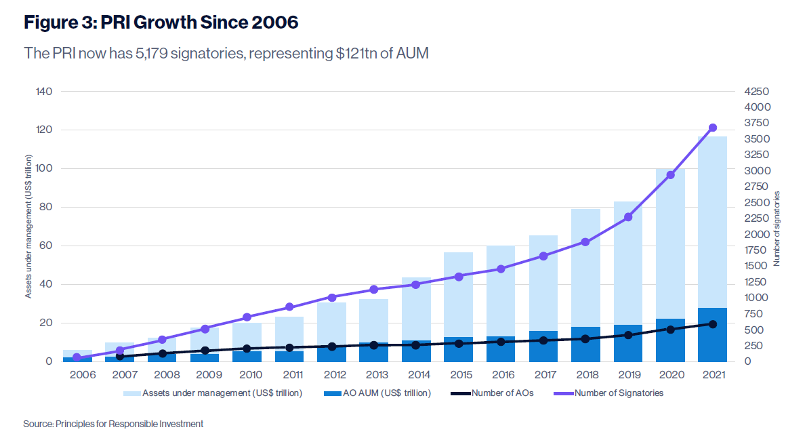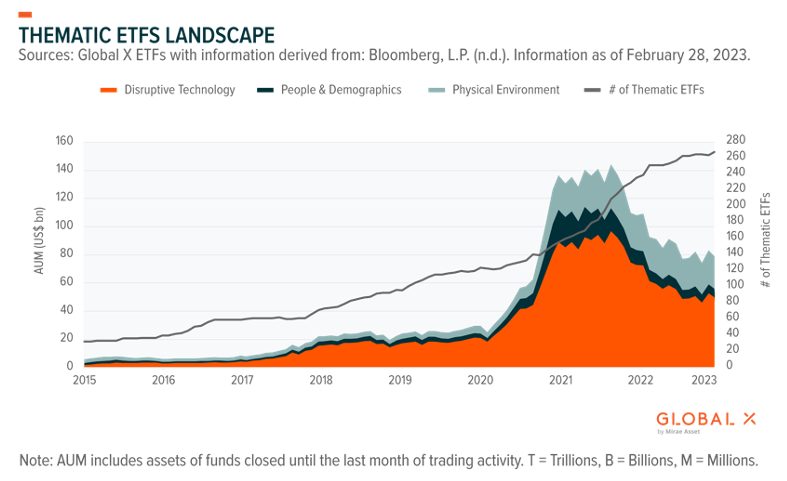Bioeconomic Analytics Framework: Accelerating Decarbonization to Deliver on Net Zero Objectives
By Jeff Allen, Project Director, Lee Enterprises Consulting
Special to The Digest
The Bioeconomy – Investment Community Grand Challenge
The pace of decarbonization and the success of net zero initiatives are closely tied to financial returns. Bioeconomy technologies are now primed for mainstream investment, but a crucial missing piece is the bioeconomic analytics framework needed for catalyzing increased investment in the bioeconomy to transition from linear economies to sustainable circular economies. This transition requires an innovative communication platform that can bridge the gap between advancements in bioeconomy technology and the sophistication of the investment community.
Developers in climate tech and biotech along with holders of intellectual property in these fields often need more expertise to communicate effectively with asset managers. Capital resource stakeholders evaluating bioeconomy technologies need advanced due diligence systems and benchmarking tools to turn complex information into actionable insights. Unfortunately, technology providers have not yet developed specialized communication solutions for this sector. As a result, sustainability investment platforms have primarily emerged within the investment community itself. These platforms aim to manage risk and create value by connecting technology developers with capital resources. Examples of such platforms include Calvert, ishares, Carbon Compass, Carbonomics, ESGBook, and Sustainalytics. To build trust and confidence among investors, external assurance standards have also been established to track the effectiveness of these sophisticated solutions.
These overarching dynamics underscore the grand challenge for accelerating decarbonization toward net zero. Effective communication of bioeconomy technologies to the investment community to enable the prioritization of these technologies based on market metrics, quantifiable sustainability contributions, and financial returns are key to achieving this goal. In essence, what is needed is a “bioeconomy quant for the quants” to serve as the communications platform to drive the pace of decarbonization.
The Megatrend
The hand of man moving the carbon needle one way and then the other at will is well-trodden ground. It has given rise to a flourishing bioeconomy that holds the technological answers to address the environmental, social, and governance paradigm, a soaring megatrend modeled to be valued at $34 trillion. Indeed, the United Nations Principles for Responsible Investment signatories collectively represent over $121 trillion of assets under management and growing.

Starkly underscoring the rationale for a new era of advanced bioeconomic analytics-enabled communications among the technology developers and the investment community can be seen in contrasting PRI signatory AuM with physical environment thematic ETFs (climate-centric, bioeconomy derived entity components), which are measured in the billions of dollars of assets under management largely residing within a space of mutual funds and ETFs characterized as generating $2.7-trillion in value. Despite the inherent ambiguity, it is among the most essential drivers for innovation in the bioeconomy technology-investment sector communications aside from the social cost of the carbon factor underlying it. This is a massive delta our bioeconomy community is primed to address, by shifting from serving as a component of tailored fund offerings or thematic ETFs to the infrastructure of mainstream investment and thus decarbonization to net zero, nonlinear economies.

At the crossroads of this megatrend has been sustainability accounting, providing connectivity between financial returns and investor values. A more evolved system of targeted and bespoke bioeconomic analytics that merges and more effectively communicates sustainability return metrics, financial return metrics, and market size metrics is poised to emerge and serve the investment community and bioeconomy technology developers in parallel for acceleration and derisking of bioeconomy investment. Bringing the IP holders and entities scaling up the climate tech together with the capital resource managers under aligned interests earlier in the lifecycle will be the essential factor causing us to arrive at net zero.
Technoeconomic Analysis, Sustainability Investing, & Bioeconomic Analytics
Evaluating intellectual property from an investment perspective and projecting financial returns from bioeconomy technologies has largely been the domain of traditional technoeconomic analysis (TEA). A static spreadsheet accompanied by written analysis, that provides valuable insights into basic outcomes such as capex and OpEx, IRR, NPV, 10-year cash flows, ROI, ROE, and such. Factoring in technology readiness levels and augmenting TEAs with Aspen, Monte Carlo, and Tornado functionality and modeling have been contributing best practices to the gold standard.
As the net-zero trajectory has redefined the landscape of how CEOs and asset managers evaluate resource deployment, sustainability investing analytics have enabled the linkage between financial returns and values-driven investment rationale. Stability, resilience, risk mitigation, and long-term growth consistently arise from entities and funds with well-conceived and executed environmental, social, and governance plans woven into their fabric.
Bioeconomic Analytics – a bioeconomy quant finance platform constructed for and focused on net-zero – is now poised to emerge as a means to converge the traditional and essential TEA elements with projected sustainability metrics, to more effectively:
- derisk and translate bioeconomy technologies observed as nascent and requiring a scale-up journey to the investment community,
- rethink and reposition more mature decarbonization strategies and technologies to amplify the impacts they can have in the context of net-zero,
- defragment and coalesce thought leadership around the establishment and recalibration of individual net-zero policies and the broader net-zero policy and reporting ecosystem itself, and
- enable corporations to more readily calculate the costs of, and develop the strategies for, achieving net-zero thereby closing a 43% gap pertaining to Scope 3 emissions strategies.
Such a bioeconomic analytics platform will serve as a means of standardization akin to having predictive financial analysis and impact assessment software that tracks the life of a given project and venture as the economic central nervous system and sustainability claims measurement apparatus all throughout its evolution. The system may also serve as a repository for comparative analysis of various iterations of a single given process technology, side-by-side review of a wide range of different and unique process technologies and ventures, nextgen tornado analysis of exponentially greater variable sets, and predictive quantitative analysis of entity performance within a fund. Construction of this bridge between net-zero enabling technologies and investment to catalyze the accelerated pace of decarbonization can be accomplished by the following framework elements:
- Merging of sophisticated investment community financial modeling, conventional techno-economic analysis, and quantifiable sustainability return metrics.
- Development of a standardized platform for communicating bioeconomy technologies through their business cases in the context of net-zero grand challenges and answering the essential questions: does it make money and how much, “size of the prize” market analytics, and how green is it truly compared to other opportunities in the sector?
- Syncing and calibrating these outputs with regulatory compliance, particularly for tracking with the SEC Climate Disclosure Rule arising from the Task Force on Climate-Related Financial Disclosuresand with California’s proposed SB253, to ensure net zero commitments and carbon neutral claims are backed up by data amassed in a consistent and reliable manner that travel through downstream components of the supply chain.
- Evolving from conventional bioeconomy TEA models consisting of multiple static worksheets feeding into a 10-year cash flow proforma with return metrics on an isolated case-by-case, technology by technology level to condensing of all the data per technology, technology iteration, or venture into only one siloed format.
- Thereby leveraging that code-enabled condensing of large volumes of data to feed side-by-side comparative quantitative analysis of financial return metrics tethered to sustainability return metrics to inform the rationale and thesis for derisked decarbonization net-zero fund development and investment, and to predict the ability of a given process technology to deliver on net-zero claims.
- Populate the platform with the bioeconomy feedstocks making up the ‘billion tons’ and beyond, along with corresponding HPLC compositional data for each feedstock. Enabling selection of any feedstock to model in connection with mass flows of a given process technology. To determine what is the best use of a given feedstock in the context of net-zero targets.
- Carbon intensity (CI) / LCA (lifecycle assessment) / GHG reduction / FTE green job generation / waste reduction and resource conservation calculation functionality for impact assessment projections built into the platform for fuels, chemicals, ingredients, materials, and intermediates, along with automated collection and updating of corresponding producer incentive value calculations across various markets for unpacking and understanding biofuels strategies and incentives and capital eligibility in certain geographies (IRA, RFS, state-level LCFS, British Columbia LCFS, NMTC, USDA, LPO, and beyond).
- Extend the functionality to construction and ramp-up modeling, various nameplate capacity and corresponding capex modeling, inflation, FTEs / green job creation, societal impact vis a vis social cost of carbon, charting a course to gigaton reductions, feedstock and raw material sensitivity analysis, carbon intensity variations, process unit operation variations, technology licensing royalty modeling, black swan event modeling, quant informed optimization of site selection for replication and scale through optimization of project development capital raising outcomes, diversion of risk from the investment sector to insurance markets, and nondilutive project level finance – all for granular detail of any number of various side by side comparative scenario analysis of possible outcomes to remove uncertainty.
- Integration of fundamental market analysis of TAM-SAM-SOM for each corresponding technology, technology iteration, or venture analyzed – simultaneously in both the conventional sense and in the context of total addressable, serviceable, and obtainable CO2e emissions reductions by sector expressed as Inverse CAGR of emissions mitigated in sync with net-zero targets. Analytics for measuring the “size of the CO2e reducing prize” by bioeconomy technology or venture to inform corresponding capital resource prioritization. Simply stated, the TAM is 36.8 gigatons and 417.06PPMannually and growing – translating bioeconomy technologies to the investment community in the form of CARR (Compound Anthropocene Reversal Rate) linked with financial return metrics will be a decarbonizing force multiplier product of well executed Bioeconomic Analytics.
Stakeholder Applications for a Bioeconomic Analytics Platform:
- Investment banks, fund developers and managers, family offices, sovereign wealth funds, pension funds, private equity, and venture capital to understand and prioritize resource deployment into bioeconomy investment opportunities to optimize returns and decarbonization impact.
- Technology developers, project developers, and intellectual property holders to effectively populate their datarooms for investment by communicating their financial projections, their decarbonization metrics, and their market impact to commercial collaborators and the investment community vis a vis nextgen Bioeconomic Analytics in order to raise rounds, write bankable supply agreements with take or pay clauses, secure non-dilutive capital and project level finance, and to continuously perform side by side comparative analysis of their venture against other possible process technologies and scenarios to derisk their core business case and future operating units.
- Major corporations and multinationals charting a course for strategic optimization of returns and growth from Bioeconomy-centric sectors through new business operating units, to communicate resource deployment rationale to management and shareholders, and to understand, measure, and responsibly report and project sustainability metrics and back up net-zero related claims.
- Universities, think tanks, nonprofits, incubators, innovation centers, governments developing and calibrating policies, EPC contractors, and grant writers.
The Bottom Line
Sustainability is a keystone of resiliency and return on capital, and the evolution of evaluating the enabling bioeconomy technologies for both under a nextgen Bioeconomic Analytics quant finance platform will serve to accelerate the passage to net zero linked with amplification of financial returns. The prevailing thesis rationale being to more effectively and expediently translate net-zero centric technologies for the investment community, thereby enabling the bioeconomy to migrate from thematic to the mainstream and address the vast upside residing within the $118 trillion void between PRI signatory AuM value and the thematic ETF AuM landscape as it stands today.
About the Author. Jeff is a recognized expert in strategic advisory pertaining to positioning and derisking bioeconomy technologies for investment, and to translating bioeconomy technologies for corporations and the investment community. He serves as a Project Director at Lee Enterprises Consulting, focused on project management and Bioeconomic Analytics for mobilizing and accelerating the passage to net-zero.
Category: Fuels















